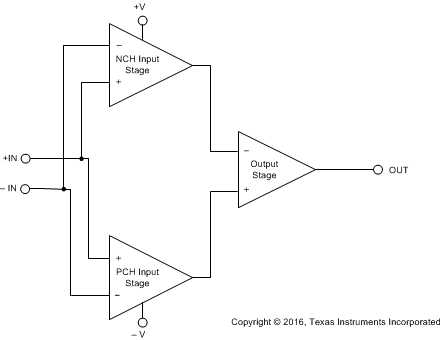TIDUCL3 February 2017
- 1 Overview
- 2 Resources
- 3 Features
- 4 Applications
- 5 Design Images
- 6 System Overview
-
7 System Design Theory
- 7.1 PCB and Form Factor
- 7.2 Optimizing Board Performance Based on LED String Voltage and Current
- 7.3 Switching Frequency
- 7.4 Output Overvoltage Protection (OVP)
- 7.5 Current Monitoring (IMON)
- 7.6 Thermal Foldback
- 7.7 Clock Generation (PWM)
- 7.8 Onboard Supply and Setting Duty Cycle
- 7.9 Buffering, Averaging, and Filtering
- 7.10 Boost Converter
- 8 Getting Started Hardware
- 9 Testing and Results
- 10Design Files
- 11Related Documentation
- 12About the Author
6.4.3 OPA2377-Q1
The OPA2377-Q1 is a wide-bandwidth CMOS amplifier that provides very low noise, low input bias current, and low offset voltage while operating on a low quiescent current of 0.76 mA (typical).
The OPA2377-Q1 operational amplifier (op amp) is optimized for low voltage, single-supply applications. The exceptional combination of AC and DC performance makes the device ideal for a wide range of applications, including small signal conditioning and active filters. In addition, this part has a wide supply range with excellent power supply rejection ratio (PSRR), which makes it appealing for applications that run directly from batteries without regulation.
Figure 4 shows a block diagram of the OPA2377-Q1 op amp.
 Figure 4. OPA2377-Q1 Functional Block Diagram
Figure 4. OPA2377-Q1 Functional Block Diagram